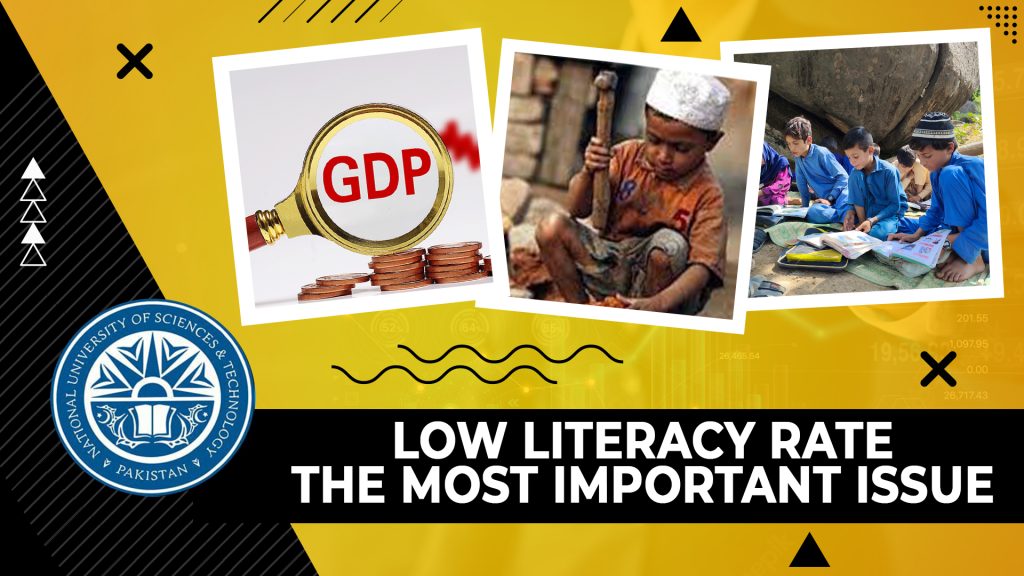Low Literacy Rate, the most important issue: The literacy rate is basically defined by the percentage of the population that can read and write. We are all aware of how Pakistan’s low literacy rate affects our entire society; in fact, most of the social issues we face today have their roots in a lack of education. Pakistan has a low literacy rate of 62.8%, which means that more than 90 million people cannot read or write at all. And I think it is the most important problem to be highlighted.
There are several reasons why Pakistan is lagging so much regarding its education, like poverty, which is one of the leading causes of the lack of education in Pakistan. 24.3% of Pakistanis live in poverty; they are unable to send their children to government schools, and it is understandable that if a person cannot afford to feed his family, how can he send his children to school? Child labor is universally condemned, but in these lower-class families, children are the source of income, and this is how they can keep their kitchens warm. Moreover, Pakistan is one of only 12 countries in the world that spend less than two percent of its GDP on education, accompanied by ineffective government policies that are the result of the incompetent leaders that are brought in by these illiterate people because they do not know the worth of their vote, which has worsened the situation. In addition, inaccessibility to schools and people’s mindsets are two of the many reasons to emphasize. This has caused a lot of social, political, and economic issues, like joblessness, which is one of the most prominent issues as we are either illiterate or underqualified for a specific job. Overpopulation is a significant issue in Pakistan and is an immediate consequence of a lack of education, as people are not focused on the quality of life but rather on the number of children.
The aim of emphasizing this is not to highlight the problems and issues in Pakistan, as everyone does, but to create awareness among the masses that our prime focus should be on raising the standard of living of the people of Pakistan by promoting the acquisition of education, as it is going to solve our half of the problems. Literacy doesn’t just mean better job opportunities now. They also set people up with the ability to develop their skills and find better livelihoods in the future.
I would like to come up with some of the measures that we must take to increase the literacy rate in Pakistan. Today is a digital era, and now we don’t have any excuse for our incompetency. The computer-based functional literacy (CBFL) solution is providing free and remote education to rural areas and low-income areas around the country. Due to the scarcity of technology at the elementary school level, it would be advantageous for both instructors and pupils if digital libraries were built there. We all know that underdeveloped cities have telecommunications networks and internet access, so those who live in these cities can also connect with some good teachers using the app. Even though 70% of our population lives in villages, our rural literacy rate is 51%. Rural communities must have adequate educational institutes so children can receive an education. In this way, rural communities will contribute to a healthier and more sustainable future. A rural education system has the potential to increase the capacity and knowledge of the rural populace, empowering them to run their farms intelligently and innovate in agricultural matters. Education also makes information accessible to the general public and reduces information misunderstandings.
Finally, because this is a national emergency, the government should step up its efforts to improve the situation.
For all of us, illiteracy is an individual problem too. Our collaborative steps will eventually change the climate
WRITTEN BY
Zeeshan Amjad
NUST Islamabad
